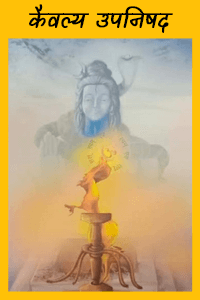Read Kaivalya Upanishad in English

Kaivalya Upanishad: Aspiration for ultimate freedom
Kaivalya Upanishad is an important text, which focuses on the attainment of ultimate freedom and enlightenment. 'Kaivalya' means: A moment comes when I am completely alone in consciousness, but I do not feel lonely. Even if I am lonely, I should not suffer from the absence of others. This Upanishad provides guidance to the seekers towards self-realization and Brahmanubhooti.
the main topic:
Introduction to Upanishads:
Kaivalya Upanishad is part of the Krishna Yajurvedic branch.
It has 146 verses arranged in four chapters.
It is written in Sanskrit language and is very suitable for contemplation.
Creation period:
There is no unanimity among scholars regarding the period of creation.
Generally, the period of composition of Upanishads is considered to be from 3000 BC to 500 BC.
These Upanishads are considered to be parts of 'Brahmin' and 'Aranyaka' texts.
Attainment of ultimate freedom:
Brahma has explained the essence of 'attainment of Kaivalya status' to Maharishi Ashvalayan.
Attainment of Brahmavidya is impossible through deeds, wealth or children.
It can be achieved through devotion, devotion, meditation and yoga.
detailed description:
On being asked by Maharishi Ashvalayan, Brahma Ji said that the ultimate essence can be known only through faith, devotion, meditation and yoga practice. It cannot be achieved neither by work, nor by children, nor by wealth. Only yogis can achieve this. This Supreme Being is manifested in the form of Brahma, Shiva, and Indra and is also known as Parabrahma in the form of Omkar. It also exists in the form of Vishnu, Pranatatva, Kalagni, Aditya and Chandrama.
In Kaivalya Upanishad it is taught that the seeker who sees his soul in all beings and sees all beings in his soul, only attains 'Kaivalya Pada'. This is the realization of the soul. Whatever is there in the form of enjoyment in the three states of waking, dreaming and deep sleep, Sadashiva himself is present as a witness, neutral to them.
Major verses of Upanishad and their interpretation:
Attainment of Kaivalya:
"O sage! That supreme transcendental element can be known by faith, devotion, meditation and the practice of yoga.
"The person who sees his soul equal to all the living beings and sees his soul in all the living beings, only that seeker attains 'Kaivalya Pada'."
Inseparableness of soul and Brahma:
"I am an atom even greater than an atom, that is, I am an atom. I myself am a great man and this entire world full of strangeness is my form."
"I am the ancient man, I am God, I am Hiranyagarbha and I am the Supreme Being in the form of Shiva."
conclusion:
Kaivalya Upanishad inspires the seekers towards self-realization and realization of Brahman. This Upanishad explains that attainment of Kaivalya status is possible only through faith, devotion, meditation, and yoga. In this, there is a deep analysis of the integrality of soul and Brahma, which provides guidance to the seekers to achieve peace and freedom in life.